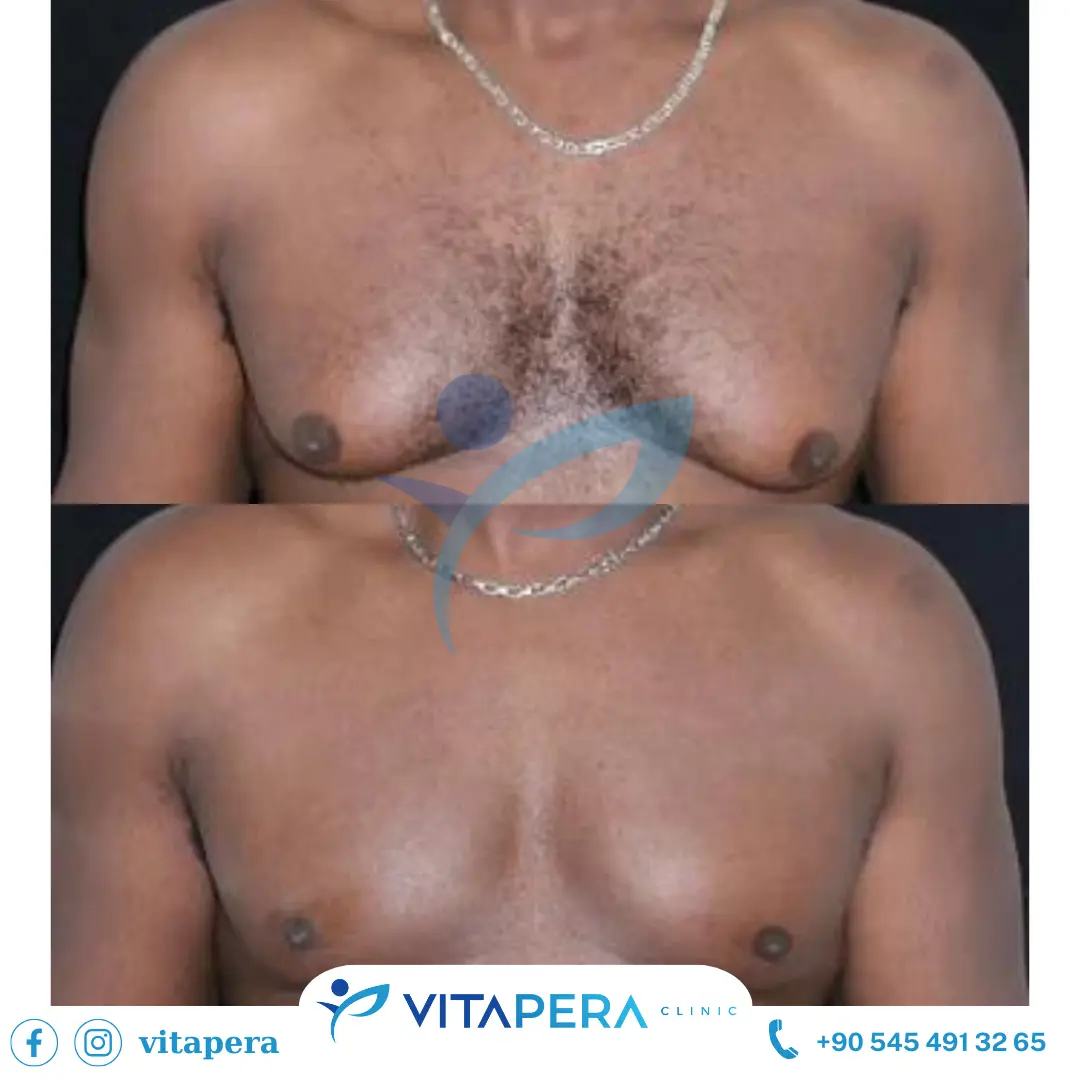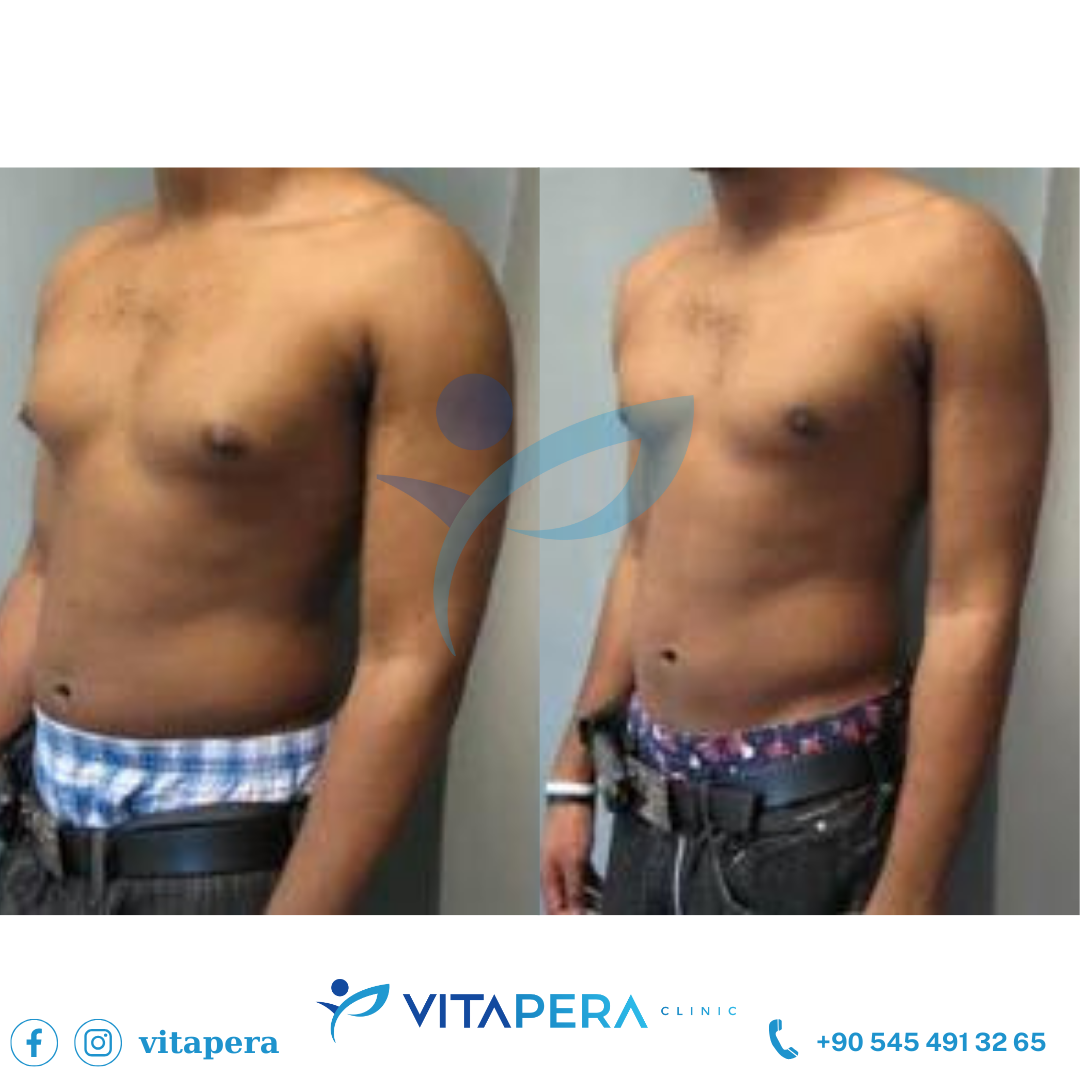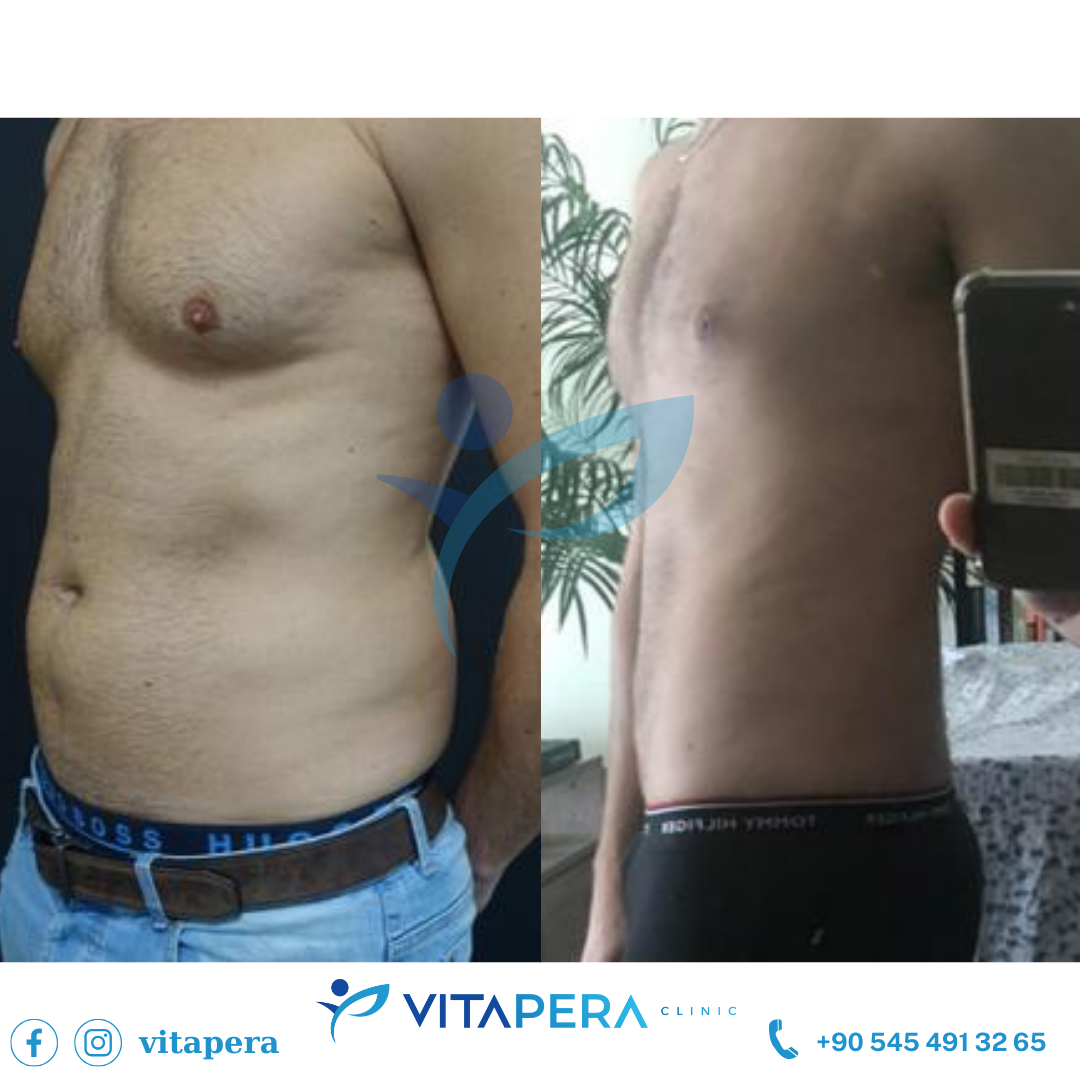Gynecomastia
Change Your Body,
Change Your Life In Istanbul

Contact Us
(+90) 536 558 12 88


Everyone Has the Right to Look Better Make an Appointment Now!
Why Choose Us?

Transportation
In Istanbul, your driver handles airport, hotel, and hospital transport.

Planning
Your companion translator handles all logistics for your comfort.

Accommodation
Free luxurious hotel accommodation is pre-booked by your consultant.

Aftercare
Our medical team offers lifetime support for all your inquiries and needs.
Causes and Symptoms of
Gynecomastia
Causes:
Hormonal Imbalance
Medications
Puberty
Medical Conditions
Symptoms
Treatment Options for
Gynecomastia in Turkey
Observation
Medications
If gynecomastia persists or causes significant distress, healthcare providers may prescribe medications. These medications aim to regulate hormone levels, specifically by reducing estrogen or increasing testosterone. However, the effectiveness of medication varies, and it may not be suitable for all individuals.
Surgery
What Makes Me a Candidate for
Gynecomastia Treatment?
Presence of Enlarged Breast Tissue:
The primary factor that makes you a candidate for gynecomastia treatment is the presence of enlarged breast tissue in males. If you have noticed an abnormal growth in your chest area that resembles breasts, it may be an indication of gynecomastia.
Physical and Emotional Discomfort:
Persistent Gynecomastia:
While gynecomastia is common during puberty and often resolves on its own, persistent cases may require treatment. If you have been diagnosed with gynecomastia that has persisted beyond the expected timeframe or has worsened over time, you may be a candidate for treatment.
Desire for Improvement:
Ask Questions
You can call us 24/7 for your questions and inquiries about all of our Treatments & Procedures.
Are Gynecomastia and Liposuction the Same?
Gynecomastia refers to the enlargement of breast tissue in males, resulting in the appearance of breasts. Numerous things, such as hormonal imbalances or specific medications, can contribute to it. Gynecomastia is a specific medical condition that requires evaluation and diagnosis by a healthcare professional.
On the other hand, liposuction is a surgical procedure used to remove excess fat from specific areas of the body, including the chest. It is a common treatment option for gynecomastia when the enlargement is primarily due to an excess of fatty tissue. Liposuction can be an effective approach to reducing fatty deposits and creating a more sculpted and masculine chest contour.
While vaser liposuction can be a part of the treatment plan for gynecomastia, it is not the same as gynecomastia itself. Gynecomastia involves the enlargement of both glandular breast tissue and fatty tissue, whereas liposuction solely focuses on removing excess fat.

We are always with you for your Health!
You can call us 24/7 for your questions and inquiries about all of our Treatments & Procedures.
Gynecomastia Treatment Procedure Explained
Initial Consultation And Evaluation
Surgical Techniques For Gynecomastia
Liposuction: Liposuction in Turkey is a widely used surgical technique for gynecomastia. When fatty tissue buildup is the main cause of gynecomastia, liposuction is effective.
Tissue Excision: In cases where gynecomastia involves a significant amount of glandular breast tissue or excess skin, tissue excision is performed. Tissue excision is often combined with liposuction for comprehensive treatment.
Combination Approach: Depending on the specific characteristics of gynecomastia, a combination of liposuction and tissue excision may be used. This approach allows for targeted removal of excess fatty tissue and surgical excision of glandular tissue or skin as needed.
Nipple Repositioning: In some cases, gynecomastia may have an impact on the position or size of the nipples. To create a more balanced and aesthetically pleasing appearance, nipple repositioning may be performed during the surgical procedure.
Liposuction And Tissue Excision
In cases where there is a significant amount of glandular breast tissue or excess skin, tissue excision may be necessary. This technique involves surgically removing the glandular tissue and trimming any excess skin to achieve a flatter and more masculine chest contour.
The healthcare professional will determine the appropriate combination of liposuction and tissue excision for your specific needs.
Recovery And Postoperative Care
It’s important to follow these instructions diligently to promote proper healing and achieve optimal results. During the recovery period, you will have follow-up visits with your healthcare professional to monitor your progress, address any concerns, and ensure a smooth recovery.
We are always with you for your Health!
You can call us 24/7 for your questions and inquiries about all of our Treatments & Procedures.
Overview of Gynecomastia Surgery

Anesthesia Method

Duration Of
Intervention

Sports Activity
Recovery

Return To
Social Life

Return To
Work

Hospitalization
Average Pain After
3 Days
Amazing Result!
Gynecomastia Before & After





Frequently Asked Questions
Is Gynecomastia Treatment Safe?
How Long Does It Take To Recover From Gynecomastia Treatment?
Will There Be Visible Scars After The Procedure?
Can Gynecomastia Be Treated Without Surgery?
Can Gynecomastia Come Back After Treatment?
What Is The Cost Of Gynecomastia Treatment In Turkey?
Can Gynecomastia Treatment Improve Self-Confidence?
Is Gynecomastia Genetic Or Acquired From Lifestyle?


Everyone Has the Right to Look Better Make an Appointment Now!
